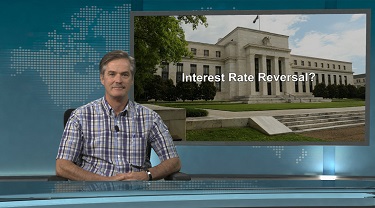Flip-flops aren’t the favoured footwear of the central banking set—not in the spring, the summer or anytime. Once on a monetary policy course, they tend to pursue it, and if circumstances warrant a change, it typically takes a lot to turn things around. For smaller economies at the mercy of external forces, reversals are less avoidable. For the larger, more integrated markets, an about-face is harder to swallow. So, what do we make of the United States Federal Reserve Board’s supposed mid-course correction?
The Fed has been in interest rate tightening mode since late 2015. The decision to depart from a seemingly endless period of ultra-low interest rates did not come easily. The groundwork began to be laid in May of 2013, when Fed Chair Ben Bernanke signalled he was considering winding down the quantitative easing program, which indeed began about a year later.
Rate hikes followed, but were very gradual. From the first 25 basis-point move, it took a year before the Fed was ready for a second one. Two further 25-point moves followed in early 2017, then a five-month pause before a string of five quarter-point hikes that took us to December of last year. Markets fully expected that the U.S. was leading the charge to rate normalization, the so-called “neutral rate,” the actual level of which is a hot talking point. Fears of global slowing led to pause-talk, and now Fed Chair Jerome H. Powell is openly talking about an imminent cut. High drama, in central bank speak.
Hints of a change in position began earlier this year, as global softening birthed “wait-and-see” language. It marked a shift from the current Fed Chair’s more typical hawkish tone, instantly capturing market attention. Since then, the tone has become steadily softer, becoming first decidedly doveish, and the latest statements musing that the Fed may need to contemplate an imminent rate cut.
Here’s the Fed’s dilemma: its statements consistently acknowledge solid fundamentals that are feeding current growth and job creation in a very tight labour market environment. At the same time, the Fed is sensitive to international “cross currents,” lower business confidence and a sense that there is a slowing of business investment underway. Its statements corroborate our view that trade policy turmoil has set off an investment hesitation that is not only compromising current growth in activity, but the global economy’s ability to accommodate further growth across the near-term horizon.
Thankfully, thus far inflation has walked up the middle of these conflicting realities, staying consistently close to the 2% target level. That’s great, but it’s not really today’s price changes that matter, but rather what they are going to be in the next 12 to 18 months. Global slowing could keep things contained on the prices front, but any positive turn in the tide would catch the market in a very tight state. The Fed has acknowledged that the benefits of steady economic growth have finally reached average folks, hinting that wage pressures could surface. Moreover, resolution of the largest trade issues, in particular the U.S.-China spat, could unleash pent-up investment in a way that rapidly ramps up pressure on constrained resources.
In addition, rate cuts could throw into doubt any hope that normalization can be achieved before the next global economic downturn. The U.S. has really been the world’s only hope that this can happen. The European Central Bank keeps putting off the start date for its tightening, and Japan seems permanently stationed in zero-rate mode. At this point, a Fed reversal would cast further doubt on monetary policy’s ability to assist growth should recession rear its ugly head anytime soon.
Adding to the confusion are the U.S. President’s intermittent comments and open threats to the Fed. He has made it clear the direction he’d like to see things take, even recently threatening to replace the current chair with someone who sees things his way.
The bottom line?
In a global economy hobbled unnecessarily by manufactured uncertainty, the last thing it needs is more of the same. But the Fed’s softer language, provoked by uncertainty, is actually further feeding uncertainty. It’s a vicious spiral that only its manufacturers can dismantle. Let’s hope that when they do undo the international impasses, it’s not too late.
This commentary is presented for informational purposes only. It’s not intended to be a comprehensive or detailed statement on any subject and no representations or warranties, express or implied, are made as to its accuracy, timeliness or completeness. Nothing in this commentary is intended to provide financial, legal, accounting or tax advice nor should it be relied upon. EDC nor the author is liable whatsoever for any loss or damage caused by, or resulting from, any use of or any inaccuracies, errors or omissions in the information provided.





